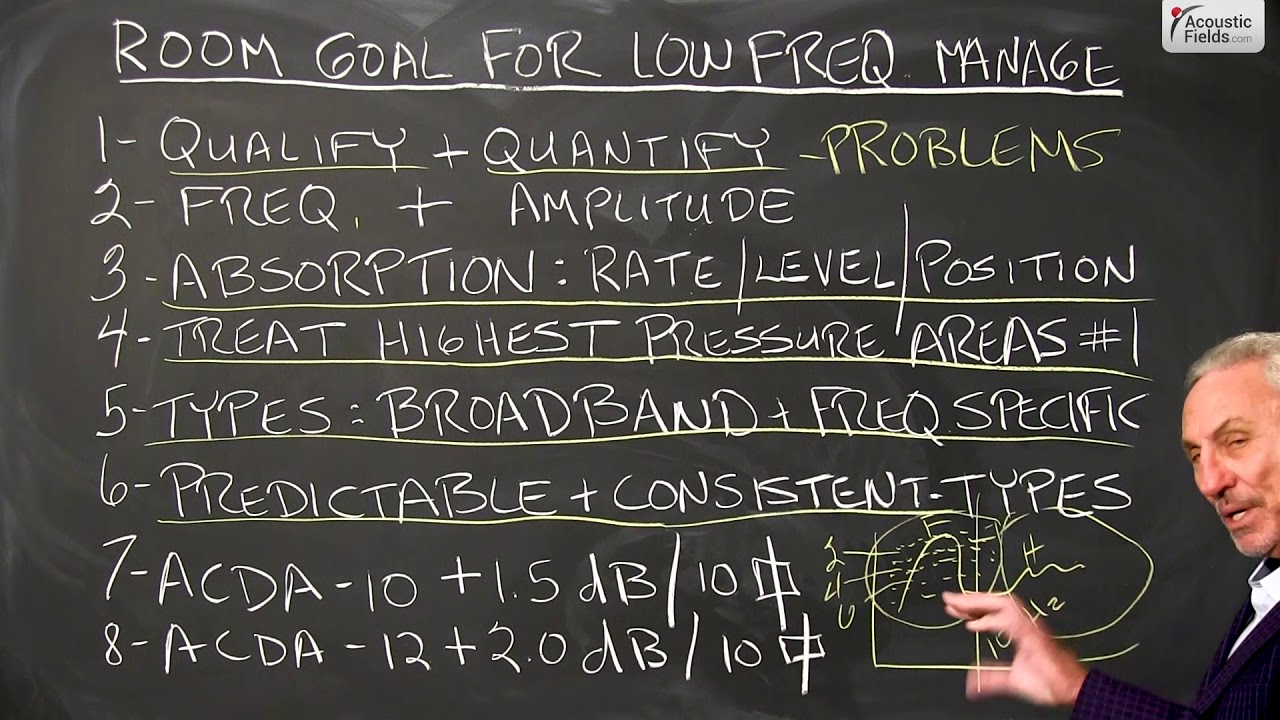Let’s talk about the room kind of as an entity and what is its goal if it could speak for itself, if it could act for itself, if you will, what would its goal be for low frequency management? So if you were a room and you were too small and the people that lived in the room had 5-18 inch subwoofers, what would you do? Well, you would tell them first that if you’re going to solve my problem then you would have to qualify and quantify the problems first, right?
So we’ve got to know that the problems are first before we can treat them. And I always tell people when you go to doctor, when you’re not feeling well, the first thing he does is he gives you a blood test, look at the areas that you’re deficient in and prescribes all kinds of pills. Usually that’s the way it goes. But you get the idea. We have to identify which is – qualify and then we have to quantify which is the amplitude or strength of the issue.
So we’ve got two things that are really critical. We have to make sure we know what frequencies are causing the problem and it’s usually not one, it’s usually groups. So then we’ve got to find out how big they are, okay?
So once we identify, qualify and quantify those two areas our only real form of treatment when it comes to low frequency energy is absorption. We really only have one tool in our bag. It’s divided into three parts but it’s one tool. So what are the issues we have to look at? Rate, level and position in the room. And you remember from past videos, what are the three types that we; have, low frequency, diaphragmatic, membrane and Helmholtz, right? And they all have their own frequency characteristics.
Our goal if we were the room, we would tell people to treat the highest pressure area inside of the room first. So we all know that traditional big bump that we get below a 100 cycles, okay? We all know that one. So the room would say let’s start treating that first. Because this has such a large impact on this. So we want to make sure that we treat this first because any changes we make in this will have an impact on this. And why is that? Because this is fundamental and this is the harmonic. So we have the head and the tail so to speak that we have to get in unison together. So treat the highest pressure area first, then – we could do a series of videos just on everything above a 100 in terms of treatment. I will do that down the road.
Types. We have broadband and frequency specific. If you’re going to group them into categories broadband would be diaphragmatic, membrane and frequency specific would be Helmholtz. The goal in any low frequency absorption tool is to have predictability and consistency. Because when you’re going after this big bump, let’s say that this is the curve after two units, let’s say this is the curve impact after 4, let’s say this is the curve impact after 6.
So you can see that by adding predictable amounts of treatment, predictable square footage areas, we have a linear or direct impact on the problem. So we have to have this. We can’t put two units in and add four and then realize we see no impact here. So we have to be able to attenuate specific amounts of energy based on what we’re doing.
So we know our broadband 10 series. 1.5 dB after every 10 square feet. And we know our 12 series, which is our big one, 2 dB for every 10 square feet. So predictability and consistency in this, that’s why when you summit your room form to me, I have your room in my database, I know what it’s going to take and I know your room response curve and I know the predictability and consistency of my technology. So I can give you a real accurate assessment of your requirements to treat that bump.
I hope this helps. Room goal for low frequency management. Keep it in mind, it’s critical. Remember, everything works together, even though it’s only one room.
—
This is an unedited transcript from our video series from Acoustic Fields. There will be some errors in grammar and sentence structure that occur during this translation process.
For complete understanding and comprehension, please view the video which is included in this text. For any additional information regarding this topic or others relating to room acoustics, please contact us directly at:
P: 520 – 392 – 9486







